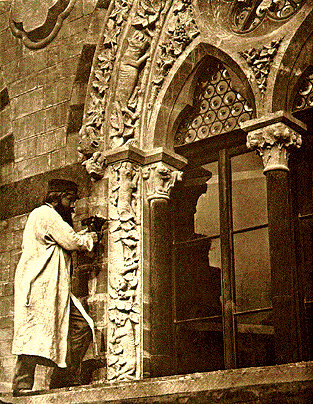
O'Shea and Whelan was an Irish family practice of stonemasons and sculptors from Ballyhooly in County Cork. They were notable for their involvement in Ruskinian gothic architecture in the mid-19th century.

O'Shea and Whelan was an Irish family practice of stonemasons and sculptors from Ballyhooly in County Cork. They were notable for their involvement in Ruskinian gothic architecture in the mid-19th century.
The practice comprised the brothers James and John O'Shea, along with their nephew Edward Whelan. James and John were the sons of a craftsman who came to Cork to work on the construction of Convamore House, and who remained and set up a workshop in nearby Ballyhooly village. [1] After his death the workshop was inherited by James and John, and is often referred to as "The O'Shea Brothers". However Whelan's role in the firm was equally significant. Nevertheless, James O'Shea was the most notable of the family. In addition to his work as an architectural mason he exhibited fine art sculptures in the classical style. [2]

The O'Sheas initially achieved notability for their floral carvings and grotesqueries on buildings in Dublin, in particular at Trinity College and at the Kildare Street Club, including the famous window piece showing the club members as monkeys playing billiards.
At the time John Ruskin was seeking to revive lively freehand stone carving of the kind typical of medieval Gothic architecture. The architects Thomas Newenham Deane and Benjamin Woodward were proposing to work with Ruskin on the design of the new Oxford University Museum of Natural History. Woodward, who had worked with them in Dublin, brought in the O'Sheas as the best qualified carvers for the job. The O'Sheas worked in tandem with Ruskin and the architects to produce a series of elaborate carvings of plant and animal forms. Each was a unique and individual design.

James O'Shea also attempted to establish himself as a fine artist with Ruskin's help, though Ruskin eventually declared himself "disappointed" with the carver's work. Ruskin later claimed that "the delight in the freedom and power which would have been the elements of all health to a trained workman were destruction to him...I hoped he would find his way in time, but hoped, as so often, in vain." [3]
Further problems arose when the Convocation of the university refused to pay for more carvings, which had largely been funded by public subscriptions. When the O'Sheas offered to work without pay, some members of Convocation accused them of "defacing" the building with unauthorised work. According to Henry Acland, the professor who liaised with Ruskin, James O'Shea proceeded to carve caricatures of members of Convocation on the entrance of the building in the form of parrots and owls. Acland forced him to remove the heads, which remain defaced to this day. [4]
The O'Sheas also worked on several other projects. One of the O'Sheas carved statues for St Mary's church in Rhyl, Wales. One also worked for the architect J.F. Bentley, who described his attitude as "unbearable". [5] Thomas Deane later employed Whelan to work in Oxford on the Meadow Building and at the Fleet Street Crown Life Office. [5]
Thomas Woolner, a sculptor also involved in the Oxford project, employed James O'Shea to create carvings for his home. The O'Sheas and Whelan went on to work with Woolner and the architect Alfred Waterhouse in the design of the Manchester assize courts, producing a series of capitals depicting gruesome forms of punishment in history. Though the original building was demolished following bomb damage in World War Two, the carvings survive in the replacement building.
James O'Shea returned to Ireland to work in Callan as a monumental sculptor, specialising in Celtic crosses and establishing a new firm with his son Edward. A fine example of this work is the Celtic cross in memory of the children's author Talbot Baines Reed, which stands at Abney Park Cemetery in Stoke Newington, London.
| Wikimedia Commons has media related to O'Shea and Whelan . |

John Ruskin was an English writer, philosopher, art critic and polymath of the Victorian era. He wrote on subjects as varied as geology, architecture, myth, ornithology, literature, education, botany and political economy.

Thomas Woolner was an English sculptor and poet who was one of the founder-members of the Pre-Raphaelite Brotherhood. He was the only sculptor among the original members.

The Oxford University Museum of Natural History, sometimes known simply as the Oxford University Museum or OUMNH, is a museum displaying many of the University of Oxford's natural history specimens, located on Parks Road in Oxford, England. It also contains a lecture theatre which is used by the university's chemistry, zoology and mathematics departments. The museum provides the only public access into the adjoining Pitt Rivers Museum.

The Manchester Assize Courts was a building housing law courts on Great Ducie Street in the Strangeways district of Manchester, England. It was 279 ft (85 m) tall and from 1864 to 1877 the tallest building in Manchester. Widely admired, it has been referred to as one of Britain's 'lost buildings'. It was severely damaged by wartime bombing in the Manchester Blitz, and then the remains were demolished in 1957.

John Hogan was one of Ireland's greatest sculptors.
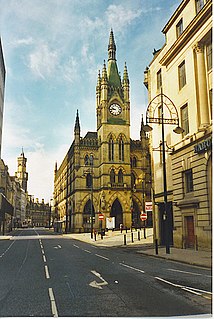
The Wool Exchange Building in Bradford, West Yorkshire, England is a grade I-listed building built as a wool-trading centre in the 19th century. The grandeur of its Gothic Revival architecture is symbolic of the wealth and importance that wool brought to Bradford. Today it is a Waterstones bookshop as well as a cafe.
O'Shea is a surname and, less often, a given name. It is an anglicized form of the Irish patronymic name Ó Séaghdha or Ó Sé, originating in the Kingdom of Corcu Duibne in County Kerry.
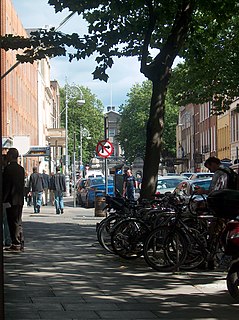
Molesworth Street is a street in Dublin, Ireland named after Richard Molesworth, 3rd Viscount Molesworth and links the more notable Dawson Street with Kildare Street and lies just over 200 m to the north of St. Stephens Green in Dublin's central business district.

Benjamin Woodward was an Irish architect who, in partnership with Sir Thomas Newenham Deane, designed a number of buildings in Dublin, Cork and Oxford.
Sir Thomas Newenham Deane was an Irish architect, the son of Sir Thomas Deane and Eliza Newenham, and the father of Sir Thomas Manly Deane. His father and son were also architects.

Sir Thomas Deane was an Irish architect. He was the father of Sir Thomas Newenham Deane, and grandfather of Sir Thomas Manly Deane, who were also architects.
William Atkins (c.1811–1887) was an Irish architect of the Victorian era. He was born in County Cork, and was reputedly apprenticed to architect George Richard Pain.

Alexander Munro was a British sculptor of the Pre-Raphaelite movement. He concentrated on portraiture and statues, but is best known for his Rossetti-influenced figure-group Paolo and Francesca (1852), which has often been identified as the epitome of Pre-Raphaelite sculpture.

Charles Thomas Thomas was a prominent Anglo-Canadian stone carver and builder in the mid-19th century. He was the son of a stonemason, and at least one brother was also a stonemason.

High Victorian Gothic was an eclectic architectural style and movement during the mid-late 19th century. It is seen by architectural historians as either a sub-style of the broader Gothic Revival style, or a separate style in its own right.
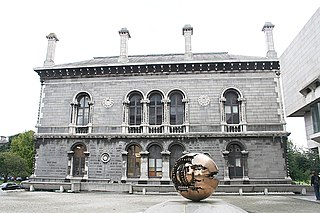
The Museum Building is a building within Trinity College. Finished in 1857 and located on the south of New Square, it is home to the University's Geology, Geography, Mechanical Engineering and Civil Engineering departments. It is a Palazzo style building, inspired by Byzantine architecture of Venice, and finished in Lombardo−Romanesque detailing, with over highly decorated 108 carved capitals.
John Joseph O'Callaghan was an Irish architect who designed buildings in both England and Ireland.

Edward Maene was a Belgian-American architectural sculptor, woodcarver and cabinetmaker.
Ermelindo Eduardo Ardolino, known as Edward Ardolino was an Italian-born American stone carver and architectural sculptor of the early twentieth century. He was the most prominent member of the Ardolino family of stone carvers. He worked with leading architects and sculptors, including architect Bertram Grosvenor Goodhue and sculptor Lee Lawrie. Ardolino participated in at least nine Goodhue-Lawrie collaborations including the Los Angeles Public Library and the Nebraska State Capitol. His carvings adorn a significant number of important public and private buildings and monuments, including four buildings in the Federal Triangle of Washington, D.C.
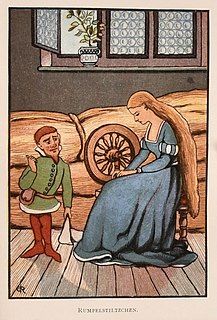
James Edward Rogers was an Irish artist, architect, and book-illustrator whose early career was in Dublin. In 1876 he moved to London, where he is believed to have worked only as an artist.